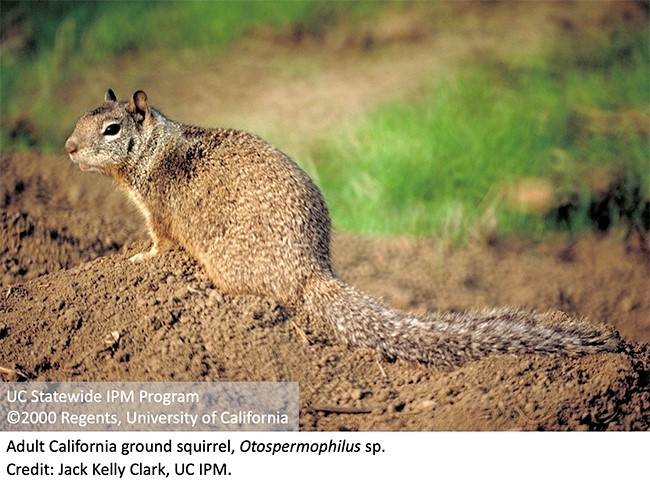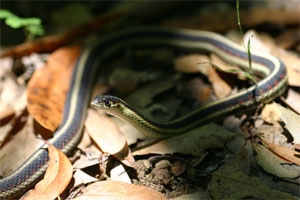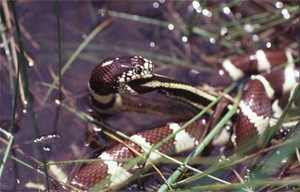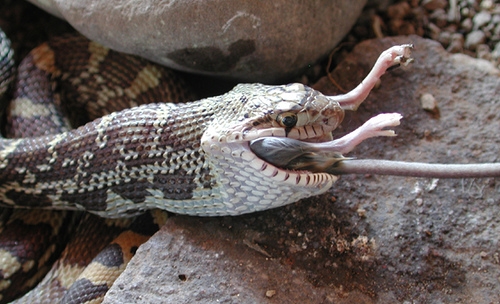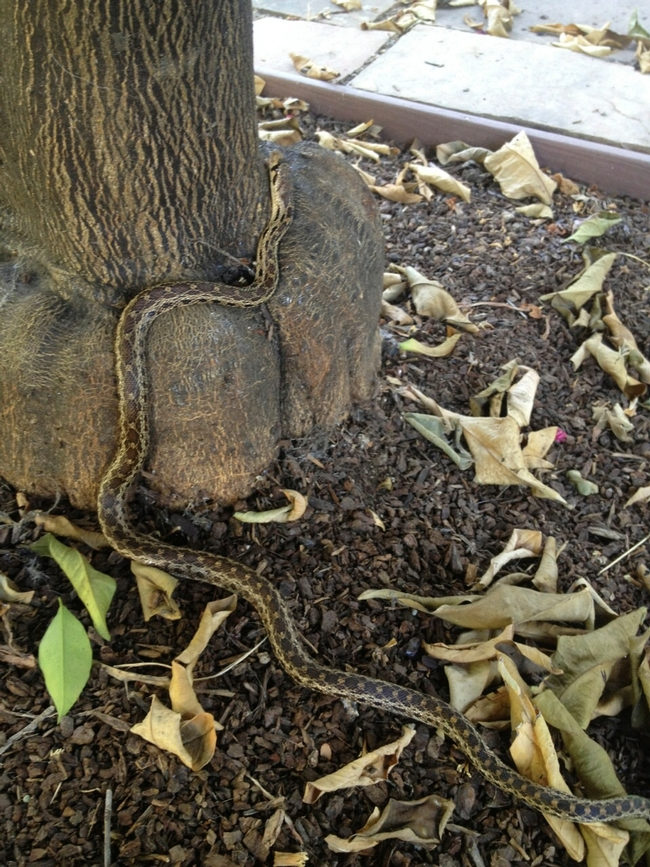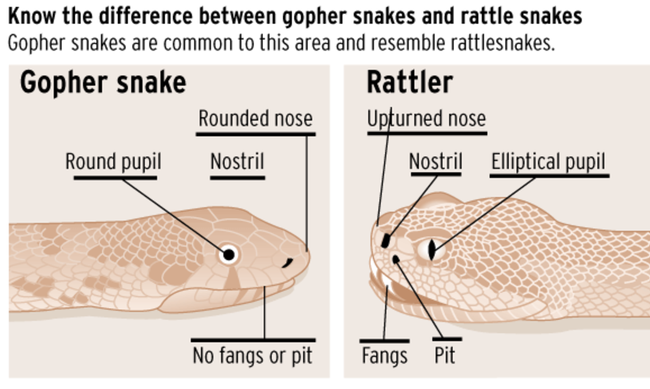
Posts Tagged: gopher
Gopher Farmers
Eric Hamilton
Eric.hamilton@ufl.edu
Root-farming gophers might be our closest agricultural relatives
Although you'll probably never see them, you can spot them by the tell-tale mounds of sandy soil dotting a field: pocket gophers. Beneath your feet, the gophers continuously create and remold a labyrinth of winding tunnels hundreds of feet long.
And, perhaps, tend the world's most recently discovered farms. Root farms, that is.
A University of Florida biology professor and undergraduate student have discovered that southeastern pocket gophers tend to fields of subterranean roots they harvest for food. The discovery makes the rodents the only mammal — other than humans — known to farm for a living.
“They're providing this perfect environment for roots to grow and fertilizing them with their waste,” said Veronica Selden, who recently graduated from Florida with a degree in zoology and is the first author of the new paper.
The gophers' daily harvest of their root crops accounts for an average of 20% and as much as 60% of their energy needs, which helps make up for the intense energy cost of burrowing in dense soil. Selden and UF Professor Jack Putz published their findings July 11 in the journal Current Biology, where they argue that the root cropping behavior of the gophers constitutes a kind of rudimentary farming.
Enigmatic creatures, pocket gophers spend nearly their entire lives below ground in sprawling tunnels up to 500 feet long. Although often thought of as pests, they eat only roots and rarely damage crops. Nor do their strong tunnels undermine the ground.
“They live entirely alone in a tunnel system that's 100 meters long. Dark and wet like a sewer pipe,” Putz said. “The roots grow in like stalactites and stalagmites. They cover the walls of their tunnel.”
Indeed, sewers helped inspire the project. Putz and Selden were puzzling over how the gophers got enough energy to dig when they recalled the perennial problem of roots growing into sewer pipes in homes.
“If roots grow into these man-made tunnels, perhaps they'll grow into these gopher tunnels that have waste to fertilize them,” Selden said.
Fortunately for gophers, though, the roots are their main food source.
The project relied on ingenuity, collaboration and — in an homage to the gophers — a lot of digging. Out at the property where Putz lives, he and Selden spent months trying to keep gophers out of their tunnels so they could measure the roots that grew back in. Using dams of wood or metal, the researchers attempted to block the gophers from their tunnels, but to no avail — the gophers merely went around.
Eventually, Putz and Selden turned to 50-gallon drums with the ends cut off. After even more digging, the researchers placed the open side of a drum into the soil to surround a patch of gopher tunnels while allowing plants on the surface to keep growing. The cylindrical shape provided 360 degrees of protection from gopher interference. (The scientists note in their paper that, while gophers were certainly inconvenienced by the project, none were harmed.)
Calculating the daily rate of root growth allowed Selden and Putz, with help from UF biology Professor Emeritus Brian McNab and others, to calculate how much of the gophers' energy needs could be met by harvesting their crops.
They discovered that digging a tunnel costs far too much energy to be made up by the roots gophers eat while excavating. But, by harvesting the roots that grow into already-dug tunnels over time, the gophers can gain enough energy to keep digging tunnels in search of more food.
Although no other mammals are known to farm, other animals definitely do. Fungus-farming ants are perhaps the most famous. They sow and tend to fields of fungus and protect them from disease with antibiotics — much like how human farmers wield herbicides against weeds.
Unlike these ants, pocket gophers neither sow nor weed their crops. Indeed, while the gophers clearly harvest their crops of roots to survive, and take steps to defend and promote their crops, the new study reveals that the definition of “farming” is far from clear.
“Planting the crop, for some people, is what constitutes agriculture,” said Putz.
Yet many other animals, and also different human cultures, use horticultural techniques to tend to crops they don't plant themselves, Putz noted.
“I think the whole issue is intellectually exciting because it's not really settled,” he said.
Selden hopes the debate calls attention to the overlooked animals.
“Pocket gophers are a lot more interesting than people give them credit for. They're really important ecosystem engineers,” said Selden, who started her research career by pondering the habits of the rodents and has gone on to study the ecology of bats and bees. “They deserve more attention.”

gopher Crescent-shaped mound and plugged burrow opening of a pocket gopher
On-Line Gopher Control
New online course on the management of
ground squirrels and pocket gophers now available
—Cheryl Reynolds, UC Statewide IPM Program
We're pleased to announce that a new online course on managing ground squirrels and pocket gophers has been added to UC IPM's growing library of online training courses. This course consists of eight video segments recorded by Dr. Roger Baldwin, a University of California Cooperative Extension Specialist in Human-Wildlife Conflict Resolution. Originally presented in June of 2020 as part of the UC Ag Experts Talk webinar series, the course covers pest identification, types of damage they cause, and the importance of their biology and ecology.
If you are a pest management professional or grower interested in vertebrate pest management, then check out this course! You'll learn about current control strategies such as habitat modification, baiting options, fumigation, and trapping. The course content is free to anyone who wishes to view it. For those requiring a certificate of completion and continuing education units (CEUs), the regular cost is $20, but we are offering a reduced price of $10 through October 31, 2021. To receive the discount, enter the code SquirrelGopher50 in the voucher box when making the payment.Managing Ground Squirrels and Pocket Gophers has been approved by the California Department of Pesticide Regulation (DPR) for 1 CEU in the Other category and also by Certified Crop Advisor (CCA) for 0.5 unit of IPM credit.
If you are a DPR license or certificate holder with a last name beginning with letters M through Z, then this will be your year to renew. Now is a good time to check out the other UC IPM online training courses offered. All are 50% off the regular price through October 31st. DPR will be sending out renewal packets in August and strongly suggests returning them by October so that your license or certificate can be renewed before it expires.
UC IPM not only offers courses accredited by DPR, but many courses are also approved by the California Structural Pest Control Board (SPCB), Certified Crop Advisor (CCA), the Western Chapter of the International Society of Arboriculture (WCISA), and the Arizona Department of Agriculture.

gopher Crescent-shaped mound and plugged burrow opening of a pocket gopher
Gopher Got Your Avocado?
Learn about vertebrates in the orchard.
And all those other animals
that are attracted to avocado orchards
like ground,squirrels,
coyotes,
birds,
mountain lions,
bobcats and
others
The California Avocado Society,
California Avocado Commission
and University of California Cooperative
Extension have their bimonthly meeting:
June Seminar Topic
Vertebrate Management
(2 hours of DPR CE Approved)
Speakers: Niamh Quinn: Human-Wildlife Interactions Advisor
Dates/Times/Locations:
Tuesday, June 11, 2019, 1:00 p.m. to 3:00 p.m.
UC Cooperative Extension Office Auditorium, 2156 Sierra Way, San Luis Obispo, CA 93401
Wednesday, June 12, 2019, 9:00 a.m. to 11:00 p.m.
UC Cooperative Extension Office Auditorium, 669 County Square Dr., Ventura, CA 93003
Thursday, June 13, 2019, 12:30 p.m. to 2:30 p.m.
Fallbrook Public Utility District Board Rm., 990 East Mission Rd., Fallbrook, CA 92028
No registration is required.

ground squirrel 1

ground squirrel hole
Goodness Snakes Alive!
Avocado orchards are prime environments for this to happen. For me, it's always startling and amazing to come across an animal that's not expected to be there, but really does belong there as much as I do. Seeing a bobcat, coyote, or deer is not necessarily as startling as seeing a mountain lion or bear. Snakes do surprise me, especially when rooting around the base of a tree looking to see if there is trunk damage. More commonly, I come across
image copyright Michael F. Benard, http://www.mister-toad.com
image copyright Michael F. Benard, http://www.mister-toad.com
The latter will eat rattlesnakes
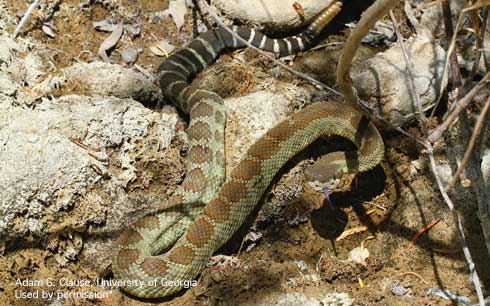
A recent report of a sidewinder in Ojai is a reminder of the people/wildlife interactions that go on all the time in both rural and urban areas. 
Rattlesnakes do show up in coastal orchards frequently. However, it is more commonly a western rattler, not a sidewinder which is more an inhabitant of desert environments. Where did it come from? Did this snake get released into this area? Somebody's pet? Did the recent fires open it up as new habitat? Are other changes going on in the area that make it better habitat? Is this just a one off occurrence?
Whatever, sometimes people and animals get along and sometimes they don't. Remember, if left alone, a snake is likely to move on to another area. Also, recall that most rattlesnake bites occur when inexperienced people try to pick up, pester, move, or kill a rattlesnake. If you would prefer the snake be removed, it is best to call a professional pest or wildlife control operator who specializes in snake removal.
A final course of action may be to kill the rattlesnake. However, this option is not generally recommended since rattlesnakes only bite in self-defense and attempting to kill them can, and sometimes does, result in a person getting bitten. Even a dead rattlesnake can have a bite reflex and is capable of delivering venom.
Rattlesnakes are natural and important predators and automatic killing of them is not recommended any more than is the automatic killing of coyotes, mountain lions, or bears, all of which can very rarely harm people.
Guidelines from the UC IPM Rattlesnake webpage follow:
What Can be Done to Prevent a Bite?
Hands, feet, and ankles are the most common sites for rattlesnake bites. Using some common sense rules can prevent most snakebites.
- Never go barefoot or wear sandals when walking in areas where you cannot clearly see where you are placing your feet. Always wear hiking boots.
- Always stay on paths. Avoid tall grass, weeds, and heavy underbrush where snakes may be present.
- Always look for concealed snakes before picking up rocks, sticks, or firewood.
- Always check carefully around stumps or logs before sitting.
- When climbing, always look before putting your hands in a new location. Snakes can climb walls, trees, and rocks and are frequently found at high altitudes.
- Never grab what appear to be sticks or branches while swimming; rattlesnakes are excellent swimmers.
- Baby rattlesnakes are venomous! They can and do bite. Leave them alone.
- Never hike alone. Always have a buddy to help in case of an emergency. Learn basic lifesaving skills.
- Never handle freshly killed snakes. You may still be bitten.
- Never tease a snake to see how far it can strike. You can be several feet from the snake and still be within striking distance.
- Don't keep rattlesnakes as pets. Many rattlesnake bites occur when people tease or play with their “pet” rattlesnake.
- Teach children to respect snakes and to leave them alone. Curious children who pick up snakes are frequently bitten.
- Always give snakes the right of way!
http://www.californiaherps.com/movies/cccerastes611.mov
http://ipm.ucanr.edu/PMG/PESTNOTES/pn74119.html
Native Reptile Captive Propagation Laws and Regulations
https://nrm.dfg.ca.gov/FileHandler.ashx?DocumentID=35207
garter and king snake images copyright Michael F. Benard, http://www.mister-toad.com
Gopher snake: friend or foe?
Gopher Snakes (Pituophis catenifer), known as a constrictor snake, are one of the most commonly seen snakes in California. Mainly active during the day, they are active after sundown on hot days. They are often observed crawling across trails and roads, especially in the morning and evenings when daytime temperatures are high. They live in diverse habitats and are regularly seen around human residences, including suburban backyards and in agriculture commodities as they are attracted to the rodents which thrive in those areas. The gopher snakes help growers control their pest problems by preying on rodents, rabbits, and birds that would otherwise destroy or ruin crops and yields. When the weather turns hot, they hunt during the night and rest on warm rocks or pavement during the day. They hibernate during the winter and are out and about between April and October, however in Southern California because of the warm climate their presences is more consistent.
Gopher Snakes are large and heavy-bodied reptiles - reported to reach 9 feet (275 cm) in length, but 4 feet (120 cm) is more common. The underside is creamy or yellow, often with dark spots. Unfortunately, this harmless and beneficial species is very often killed out of fear that it is dangerous or that it is a rattlesnake. Since the patterns on their backs are similar to rattlesnakes and because they coil, vibrate their tails, and even strike when threatened. Other differences include: gopher snake tails taper to a thin tip and lack rattles; rattlesnake tails always have rattles (or immature buttons), unless the rattle has broken off, gopher snake heads are usually narrow, while rattlesnake heads are always triangular, and gopher snake eyes have round pupils, while rattlesnake pupils are vertical.
So, if you see a Gopher snake in your grove, its best to leave him alone so that it can contribute to your Integrated Pest Management plan.

